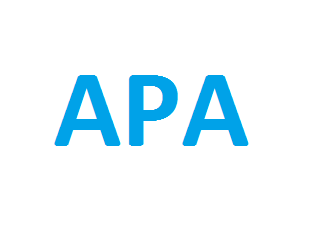
The Academic Perspective Procedia publishes Academic Platform symposiums papers as three volumes in a year. DOI number is given to all of our papers.
Publisher : Academic Perspective
Journal DOI : 10.33793/acperpro
Journal eISSN : 2667-5862
A participatory approach for identification of micro flood zones in poorly developed urban areas
Osama Dawoud;Mustafa Mansour
1221
612
Abstract
The lack of observation technologies and the information records in developing countries restrict the applicability of advanced approaches for identification of flood zones and setting-up flood risk mitigation plans. Greater challenge is encountered in urban and areas where the natural hydrological conditions are altered. The current paper proposes an approach that utilizes the globally available data for the essential hydrological analysis. The approach integrates the spatial-analysis and hydrological modeling approaches with a set of sequential iterative field/desk activities that confine and filter the flood zones and identify the associated risks. The proposed approach involves a systematic system for classification of the zones prone to flood according to the present status and the foreseen flood-risks. The proposed approach is sufficient to identify the micro-flood zones which might not be captured by the traditional analysis methods. The case study of Gaza Strip in Palestine is considered for validation of the approach and identification of the approach potential and limitations.
Keywords:
Micro-floods, Flood Risk, Poorly Developed, Urban Areas, Participatory Approach
References
[1] W. Ligtvoet, The geography of future water challenges. PBL Netherlands Environmental Assessment Agency, 2018.
[2] Unesco, World Water Assessment Programme (United Nations), and UN-Water, Leaving no one behind: the United Nations World Water Development Report 2019. 2019.
[3] P. Hu, Q. Zhang, P. Shi, B. Chen, and J. Fang, “Flood-induced mortality across the globe: Spatiotemporal pattern and influencing factors,” Sci. Total Environ., vol. 643, pp. 171–182, Dec. 2018, doi: 10.1016/j.scitotenv.2018.06.197.
[4] S. Zhu, D. Li, and H. Feng, “Is smart city resilient? Evidence from China,” Sustain. Cities Soc., vol. 50, p. 101636, Oct. 2019, doi: 10.1016/j.scs.2019.101636.
[5] H. J. Murdock, K. M. De Bruijn, and B. Gersonius, “Assessment of Critical Infrastructure Resilience to Flooding Using a Response Curve Approach,” Sustainability, vol. 10, no. 10, Art. no. 10, Oct. 2018, doi: 10.3390/su10103470.
[6] W. Liu et al., “Integrated Participatory and Collaborative Risk Mapping for Enhancing Disaster Resilience,” ISPRS Int. J. Geo-Inf., vol. 7, no. 2, Art. no. 2, Feb. 2018, doi: 10.3390/ijgi7020068.
[7] G. Minucci, D. Molinari, G. Gemini, and S. Pezzoli, “Enhancing flood risk maps by a participatory and collaborative design process,” Int. J. Disaster Risk Reduct., p. 101747, Jul. 2020, doi: 10.1016/j.ijdrr.2020.101747.
[8] L. T. de Ruig, T. Haer, H. de Moel, W. J. W. Botzen, and J. C. J. H. Aerts, “A micro-scale cost-benefit analysis of building-level flood risk adaptation measures in Los Angeles,” Water Resour. Econ., p. 100147, Jun. 2019, doi: 10.1016/j.wre.2019.100147.
[9] PCBS, “Palestinian Central Bureau of Statistics (PCBS),” 2020. http://www.pcbs.gov.ps/ (accessed Aug. 25, 2020).
[10] O. Dawoud, T. Ahmed, M. Abdel-Latif, and Z. Abunada, “A spatial multi-criteria analysis approach for planning and management of community-scale desalination plants,” Desalination, vol. 485, p. 114426, Jul. 2020, doi: 10.1016/j.desal.2020.114426.
[11] OCHA, “2015 Humanitarian Needs Overview: occupied Palestinian territory, November 2014 - occupied Palestinian territory,” ReliefWeb, 2015. https://reliefweb.int/report/occupied-palestinian-territory/2015-humanitarian-needs-overview-occupied-palestinian (accessed Aug. 24, 2020).
[12] USGS, “Shuttle Radar Topography Mission (SRTM) Void Filled | The Long Term Archive,” 2000. https://lta.cr.usgs.gov/SRTMVF (accessed Dec. 24, 2017).
[13] “Find Areas at Risk of Flooding in a Cloudburst | Learn ArcGIS.” https://learn.arcgis.com/en/projects/find-areas-at-risk-of-flooding-in-a-cloudburst/ (accessed Aug. 25, 2020).
[14] D. G. Tarboton, R. L. Bras, and I. Rodriguez-Iturbe, “On the extraction of channel networks from digital elevation data,” Hydrol. Process., vol. 5, no. 1, pp. 81–100, 1991, doi: 10.1002/hyp.3360050107.
[15] O. Planchon and F. Darboux, “A fast, simple and versatile algorithm to fill the depressions of digital elevation models,” CATENA, vol. 46, no. 2–3, pp. 159–176, Jan. 2002, doi: 10.1016/S0341-8162(01)00164-3.
[16] U. C. Nkwunonwo, M. Whitworth, and B. Baily, “A review of the current status of flood modelling for urban flood risk management in the developing countries,” Sci. Afr., vol. 7, p. e00269, Mar. 2020, doi: 10.1016/j.sciaf.2020.e00269.
Cite
-
 %0 Academic Perspective Procedia (ACPERPRO) A participatory approach for identification of micro flood zones in poorly developed urban areas% A Osama Dawoud , Mustafa Mansour% T A participatory approach for identification of micro flood zones in poorly developed urban areas% D 11/1/2020% J Academic Perspective Procedia (ACPERPRO)% P 941-949% V 3% N 2% R doi: 10.33793/acperpro.03.02.32% U 10.33793/acperpro.03.02.32
%0 Academic Perspective Procedia (ACPERPRO) A participatory approach for identification of micro flood zones in poorly developed urban areas% A Osama Dawoud , Mustafa Mansour% T A participatory approach for identification of micro flood zones in poorly developed urban areas% D 11/1/2020% J Academic Perspective Procedia (ACPERPRO)% P 941-949% V 3% N 2% R doi: 10.33793/acperpro.03.02.32% U 10.33793/acperpro.03.02.32
© Academic Perspective 2018. All rights reserved.




